22 Postcard-perfect European Villages Straight Out of a Fairy Tale
Prepare yourself for non-stop delight.
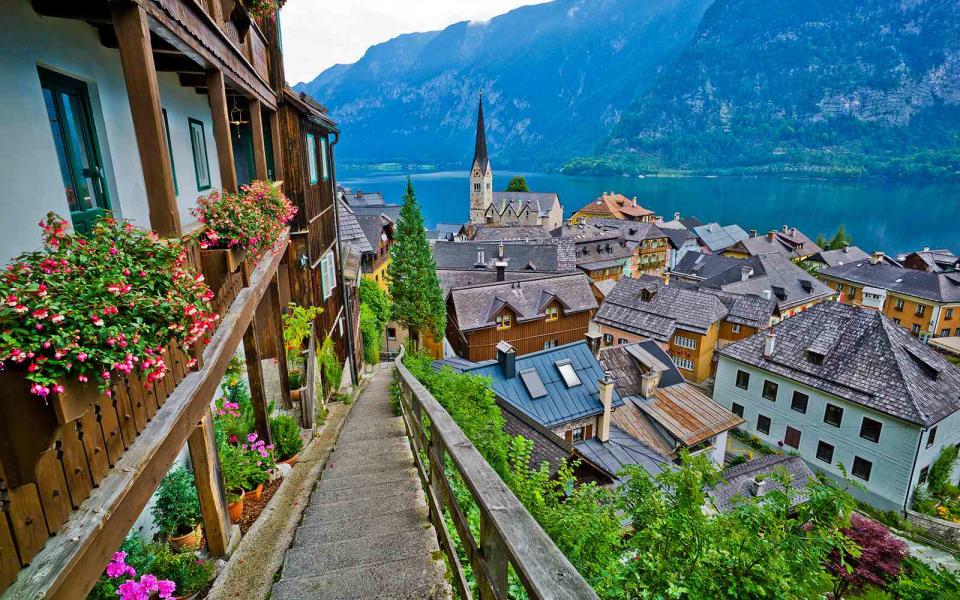
Fact checked by Olivia Young
Europe's most beautiful villages rarely remain hidden for long. The notion of postcard-perfect European villages steeped in old-world charm has inspired centuries of travelers to fan out across the continent and seek out its most fairytale-like hamlets.
The first requirement of a lovely European village is a scenic location, whether among the Norwegian fjords or the sun-splashed Greek Isles. But the finest also have distinctive features like the plaza encircled with high-gabled pastel façades in Telč, Czech Republic, or the unforgettable Victorian castle on the other side of the woods of Cong, Ireland.
However, too many travelers arriving in these small towns can also make a once-tranquil village feel uncomfortably crowded. Consider the five fishing villages of Italy's Cinque Terre, where an evening stroll in the summertime is more like shuffling through a packed amusement park, complete with overpriced restaurants and souvenir shops. But just an hour's drive down the coast from the Cinque Terre crowds is Tellaro, another stunning seaside village that is less accessible and thus blissfully unspoiled.
Reaching some of these European beauties requires extra effort, but the reward of being in a wonderful place and being able to enjoy it at your own pace — instead of fighting for elbow room — is worth earning.
Related: 25 Most Beautiful Places in Europe — From Colorful Small Towns to Secret Beaches
Tellaro, Italy
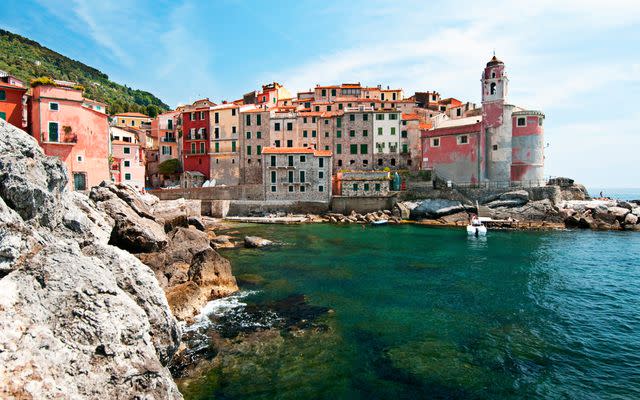
The snaking clifftop roads and a minuscule harbor have protected Tellaro from the wave of tourism that has swallowed other Ligurian seaside towns like Vernazza and Portofino. Here, a jumble of pastel buildings clings vertiginously to the sheer coast, providing the same cliff-hugging visual effect as the villages. The town is located on the Golfo dei Poeti, which is named for the poets and literary icons like Lord Byron and D. H. Lawrence who once sought inspiration in this Mediterranean haven.
Bibury, England
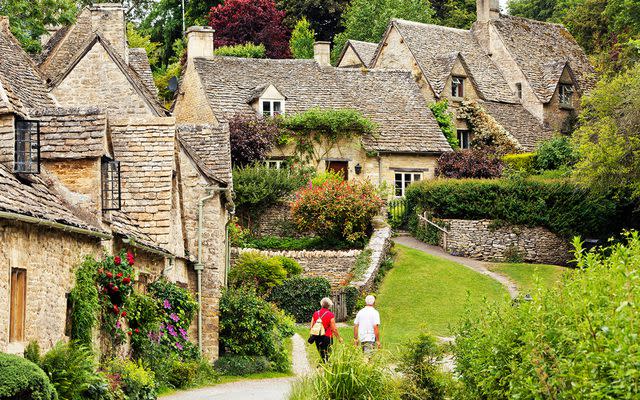
The hilly Cotswold region is a designated "Area of Outstanding Natural Beauty" in southwestern England, and one of its loveliest villages is Bibury, where verdant meadows abut medieval stone cottages with steeply pitched roofs. The River Coln, which bisects the village, teems with trout, but the most scenic area is Arlington Row, a lane of sepia-hued cottages built in the 17th century to house weavers from the nearby Arlington Mill.
Hallstatt, Austria
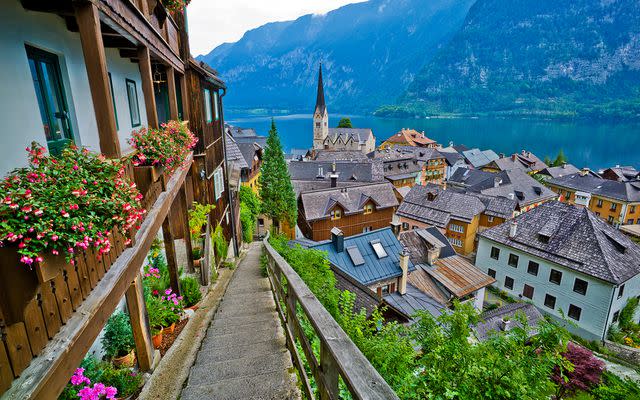
The town of Hallstatt in central Austria enjoys a storybook setting on the bank of the Hallstätter See, between the pristine lake and a lush mountain that rises dramatically from the water's edge. A history of salt mining that dates back thousands of years has translated into enduring prosperity for the town, which is evident in the beautiful market square surrounded by ivy-covered buildings.
Folegandros, Greece
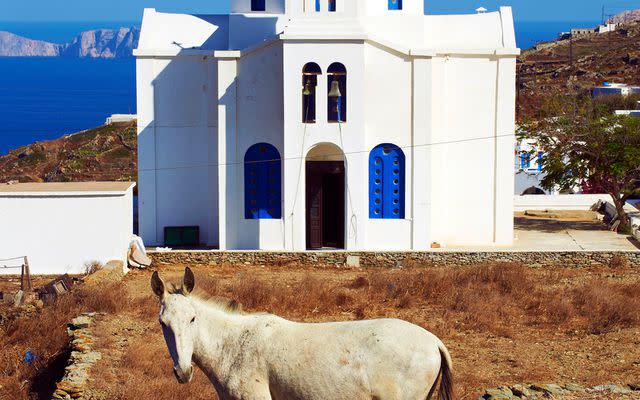
Santorini's streets are overburdened with admirers, but on the nearby island of Folegandros in the Cyclades, you'll find a similar combination of visual elements — streets paved in slate, whitewashed buildings decorated with colorful flowers, and the occasional Greek Orthodox church with a bright blue dome, — without the crowds. For a secluded swim, trek 1.5 miles to Katergo Beach, a sheltered stretch where gentle, blue-and-emerald waves lap upon a pebbly shore.
Colmar, France
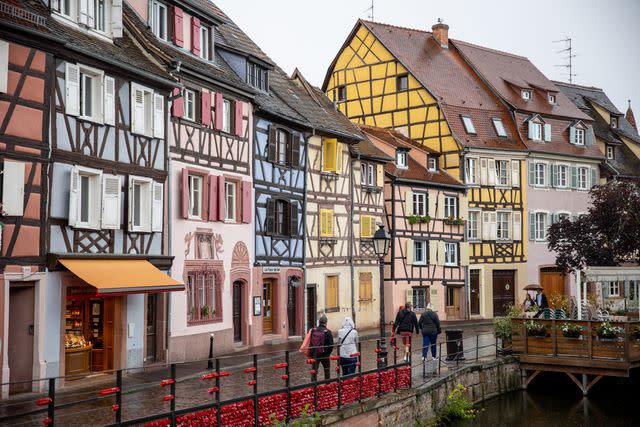
Christopher Larson/Travel + Leisure
French and German influences commingle in this well-preserved Alsatian village, where bakeries sell both croissants and kugelhopf cake, and restaurants specialize in foie gras and or choucroute (the local variety of sauerkraut). A range of architectural styles, from German Gothic to French Neo-Baroque, can be spotted in the old town. One of the most notable testaments to Colmar's beauty is the fact that it was spared destruction during World War II, in part, because of the historical beauty of its cobblestoned lanes, quiet canals, and half-timbered houses.
Reine, Norway
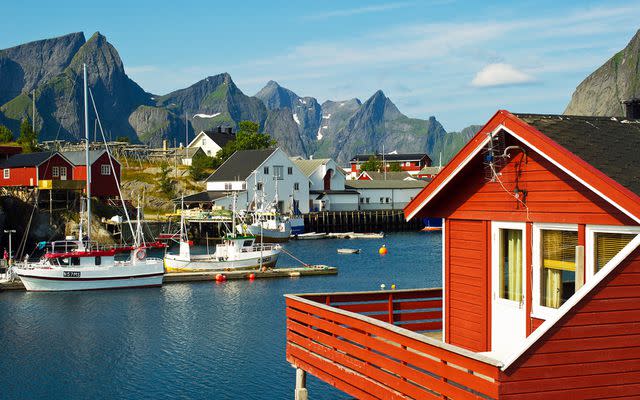
North of the Arctic Circle, Reine is a pretty fishing village in the Lofoten archipelago, an area of starkly beautiful Nordic wilderness, where sapphire bays fill the fjords and meet the mountains. Many of the bright red fishermen's cabins (called rorbuer) have been converted into comfortable cottages for visitors that offer direct access to the Norwegian Sea. These are the best places to settle in for a mesmerizing view of the night sky, whether you go to experience summer's midnight sun to winter's northern lights.
Telč, Czech Republic
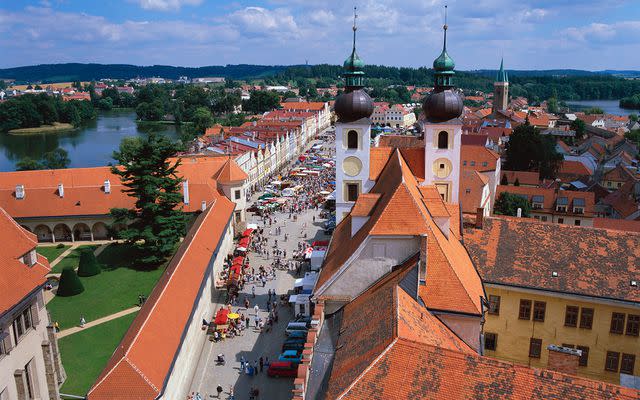
Residents of Telč, a small town in south Moravia, were once quite competitive about the beauty of their homes, and today on the elongated main square, every building is lovelier than the next. The Baroque- and Renaissance-style façades, featuring high gables painted in pale pastels, now support small shops and cafés. Here you'll find a grand Renaissance-era château and large fish-filled ponds that surround the square.
Albarracín, Spain
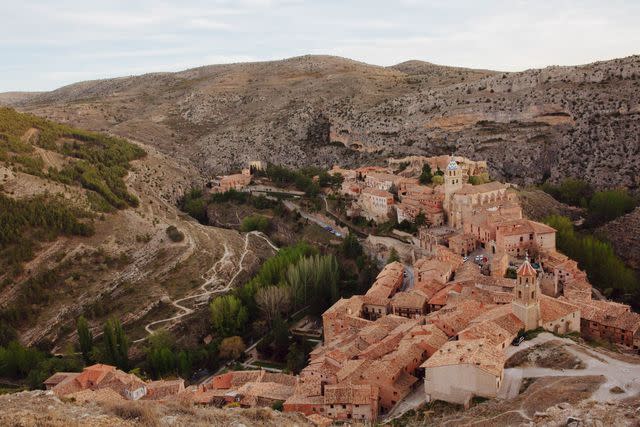
Rory Fuller/Travel + Leisure
A sliver of medieval Spain has been preserved within the fortified walls of this village in the hilly region of central Aragon. Down Albarracín's narrow alleys and winding lanes await ancient stone towers and ocher-hued castles and chapels and you can follow the historic walls for the best views up to the old Moorish castle.
Pučišća, Croatia
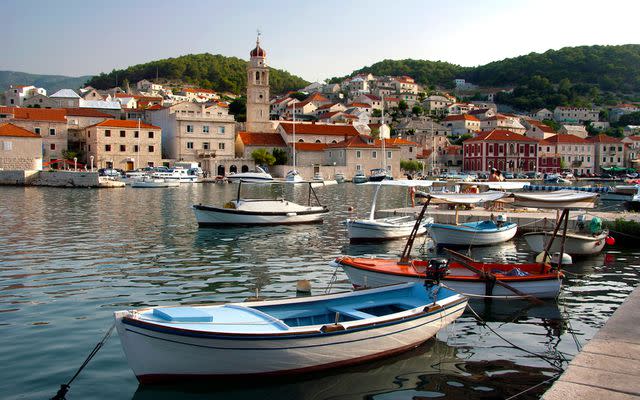
The buses and cruise ships that stop along Croatia's sunny Dalmatian coast unleash tourists eager to experience the charms of Dubrovnik and the ancient island village of Hvar. Meanwhile, fewer visitors find their way to Pučišća on the island of Brač. The reward for these savvy travelers is a seaside village with an outsize appeal: white-stone villas with terracotta roofs, narrow cobblestoned alleys, and a stone-paved square. Bask in its relative solitude and the many prime spots for swimming in the Adriatic Sea.
Cong, Ireland
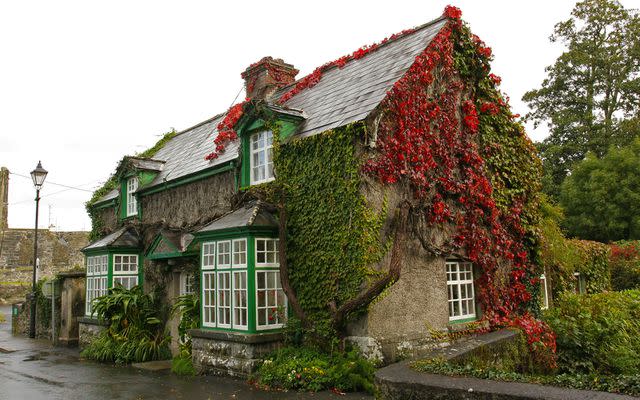
Encircled by streams, the Irish village of Cong straddles the border between County Mayo and County Galway — a region of lakes and vibrant green meadows dotted with grazing sheep. Cong is home to numerous stone bridges, the ruins of a medieval abbey, the occasional thatched-roof cottage, and Ashford Castle. The latter is even a grand Victorian estate that has been converted into a romantic luxury hotel, which is an experience worth dreaming about on its own.
Gruyères, Switzerland
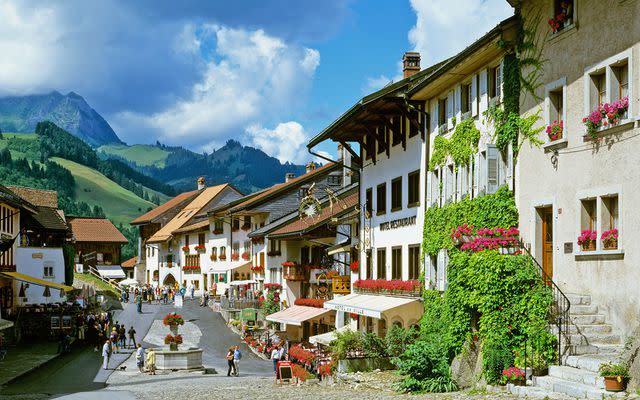
Gruyères is famous for its namesake cheese which has a mild, nutty flavor and is usually found in fondue. But few people are familiar with the town itself, a medieval hamlet in the upper valley of the Saane River in western Switzerland. A wide, stone-paved street leads up to the magnificent 13th-century Gruyères Castle's imposing fortifications and expansive Alpine views.
Bled, Slovenia
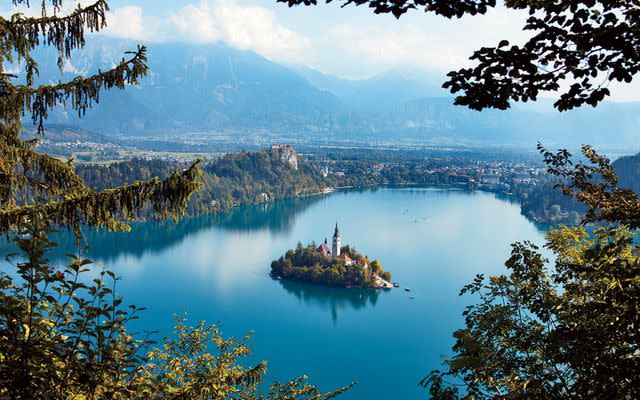
This small Alpine town in northwestern Slovenia is located on the shore of Lake Bled, a tiny island with a small Baroque church that sits perfectly at the center. After a long stroll around the lake, you can get the view of the lake and island from the hilltop castle or recharge in town with a slice of kremšnita, a sugar-topped pastry filled with cream and custard.
Óbidos, Portugal
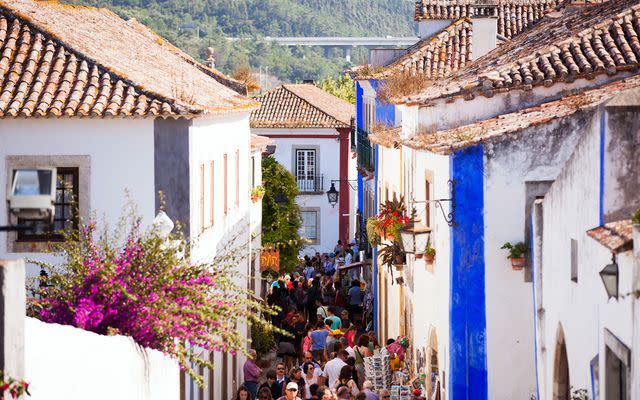
Within the crenelated walls of Óbidos on a hilltop near Portugal's western coast, remnants of a medieval village live on. Since enchanting royals in the 13th century (the town was a gift to Queen Isabel from her husband, King Dinis), Óbidos continues to impress visitors who pass through its formidable fortifications. Inside the ramparts is a labyrinth of whitewashed villas draped with colorful bougainvillea trees, cobblestone walkways, and plenty of bars ready to pour shots of ginjinha, a local liquor made with sour cherries.
Guarda, Switzerland

A winding mountain road leads to the remote Alpine village of Guarda in the Lower Engadine, a rugged region of eastern Switzerland that has none of the flash found in neighboring Upper Engadine (known for exclusive ski resorts like St. Moritz). Amid mountain peaks and verdant meadows, this enclave stands out for its quaint architecture, with many handsome houses adorned with traditional paintings, decorated windows, and traditional sgraffiti carvings. While wandering the quiet lanes, keep an ear out for locals speaking Romansh, a unique language that survives only in this isolated region of the Alps.
Marsaxlokk, Malta
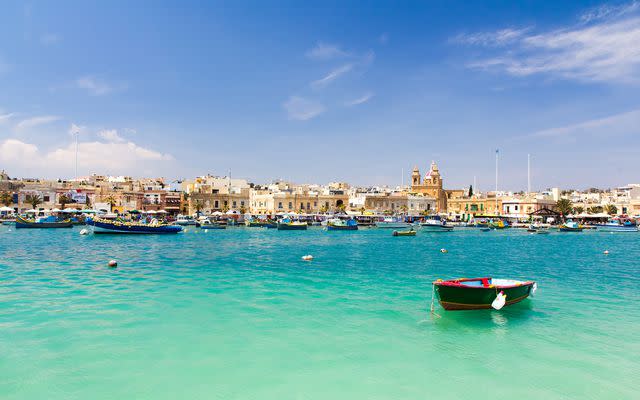
On the southeastern coast of Malta, Marsaxlokk is an ancient fishing village with a harbor that brims with old-fashioned fishing boats called luzzijiet (singular: luzzu). Painted with eyes on the bows, fishermen use these colorful boats to reel in much of the tuna, swordfish, and local lampuki (mahimahi) that's served at harborside seafood restaurants and sold at the Sunday fish market. A short walk down the coast is St. Peter's Pool, a hidden limestone cove where locals often jump into the crystal-clear sea.
Giethoorn, Netherlands
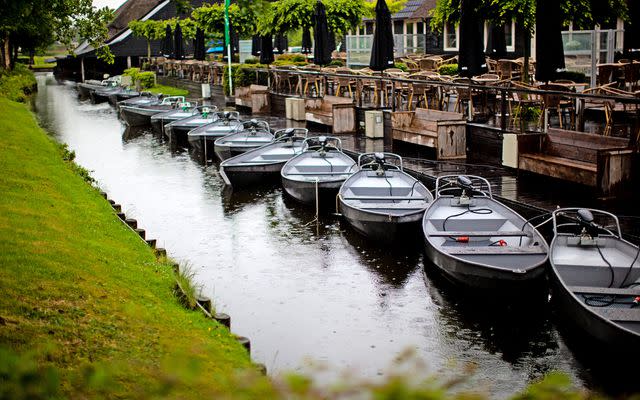
Those seeking a reprieve from city life will find the serenity of simpler times in Giethoorn. Instead of roads, the car-free Dutch village has miles of canals, so the primary mode of transportation is by boat. Glide down the narrow canals, past thatched-roof farmhouses and cottages trimmed by blooming gardens, and beneath dozens of wooden bridges that connect each grassy plot of land. Or return in the winter, when it's cold enough to ice skate on the frozen surface of the canals.
Banská Štiavnica, Slovakia
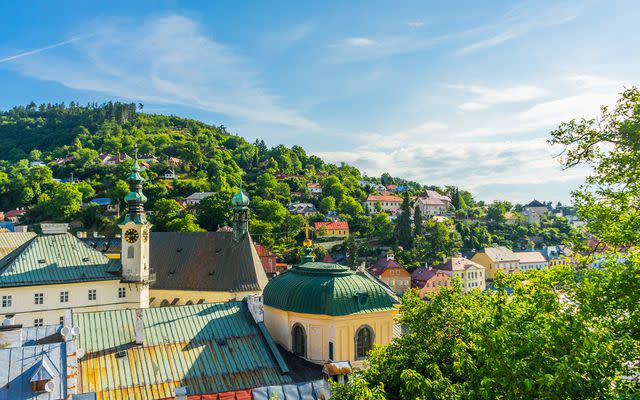
In the center of a vast caldera, this well-preserved medieval town in southern Slovakia — an easy day trip from Budapest — is also a UNESCO World Heritage site. The silver mined in this area fueled the village's historic prosperity, which is still visible in the Romanesque and Renaissance castles, Gothic and Neoclassical churches, and elegant squares that make up the historic center. Although excavation operations ceased a century ago, the silver and gold mines have been transformed into an open-air museum.
Cochem, Germany
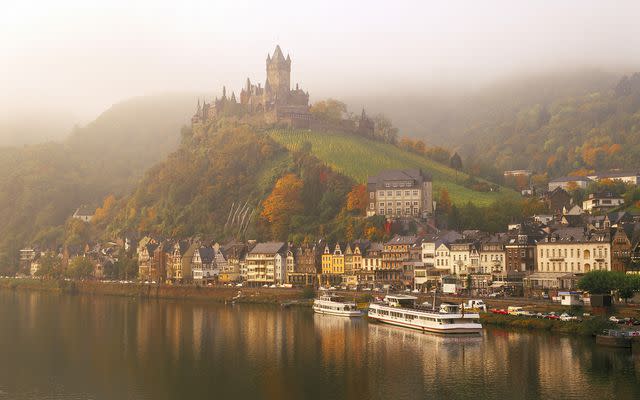
On the banks of the winding Moselle River, Cochem is a sleepy German village with traditional half-timbered houses in the central square and cute cottages lining the cobblestone lanes. A stroll along the lovely riverside promenade gives way to views of the town's hilltop castle and the surrounding vineyards of the misty Moselle Valley, where terraced vines cling to steep slopes, providing ample opportunity to sample the region's flowery white wines.
Bosa, Italy
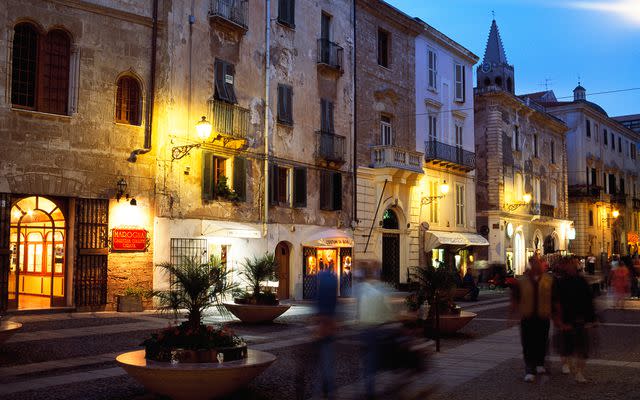
Far from the glitzy beach resorts that have many complaining about overdevelopment in Sardinia, Bosa remains an unspoiled gem on the island's northwestern coast. The medieval town, on the banks of the Temo River, has an attractive riverfront lined with palm trees and palazzi painted in pastel hues. The historic center, crowned by a hilltop fortress from the 12th century, is all stone steps, shady piazzas, and houses with wrought-iron balconies.
Kazimierz Dolny, Poland
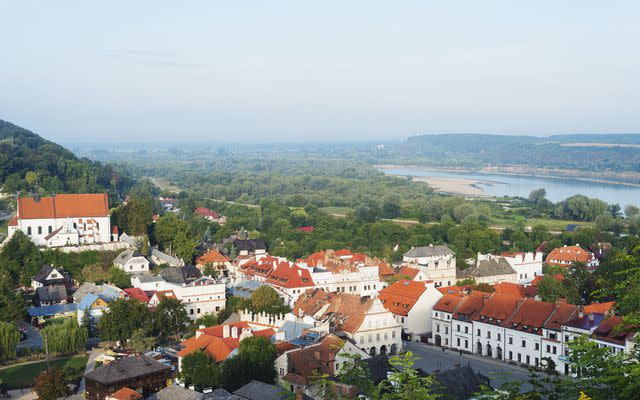
Artists have long flocked to this well-preserved hamlet near the Vistula River in central Poland. The untouched nature surrounding Kazimierz Dolny — including gorges and otherworldly tunnels created from intertwined tree roots — has inspired many painters. But the town itself, with its stone-paved market square and Renaissance-era monuments, is also packed with art galleries tucked away on the charming side streets.
Rättvik, Sweden
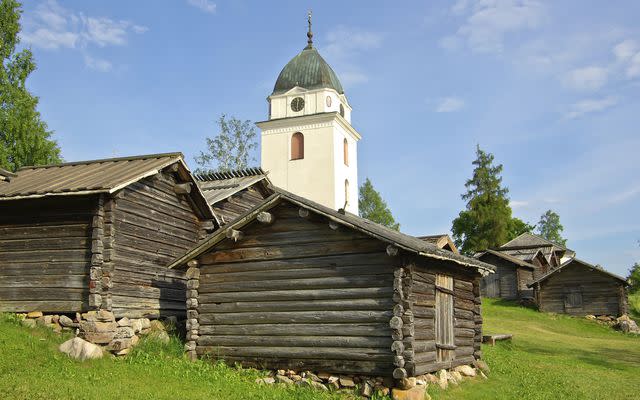
Beautiful in a classically Swedish way, Rättvik is found between acres of forest and the clear water of Lake Siljan in Dalarna that make up the Swedish heartland. Around town, historic wooden buildings are painted falu rödfärg, a deep shade of red that comes from a nearby copper mine. In the local gift shops, you'll find shelves filled with Dala horses, a national symbol that comes from this region originally.
Dinant, Belgium
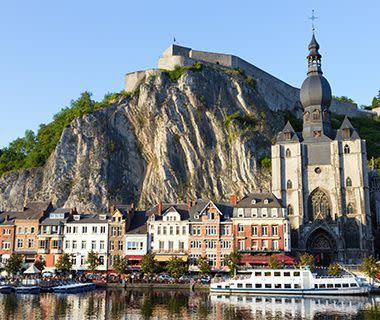
On a slim stretch of land between cliffs and the Meuse River sits Dinant, a historic town in Belgium's French-speaking Wallonia region. At the Notre-Dame de Leffe, beer lovers will find the history of Leffe, one of the best-known Belgian beers, which was invented in Dinant by 13th-century monks. For the best views, head up to the clifftop and visit the citadel that watches over the town.
For more Travel & Leisure news, make sure to sign up for our newsletter!
Read the original article on Travel & Leisure.

